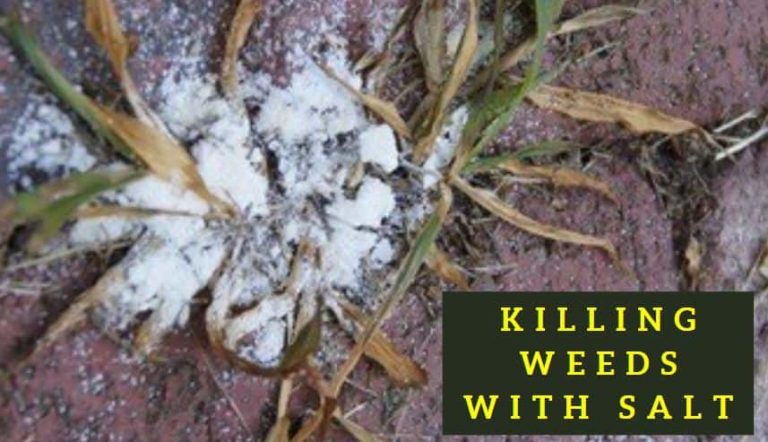Best Dicamba Herbicide for Creeping Charlie
Ground ivy (creeping charlie) is a ground cover, but it crawls on the ground, killing everything else around it. The perennial weed is tough to get rid of, so only proper timing and the right herbicide to prevent and control it will work. A good Dicamba herbicide will kill creeping charlie in your lawn, garden, driveways, and edges.
To kill creeping charlie, apply a dicamba herbicide such as Gordon’s Speedzone weed killer when the weed is actively growing. Once the creeping charlie is dead, remove any pieces of the weed remaining on your lawn to prevent it from growing the following season again.
Best Dicamba Herbicides for Creeping Charlie Control
Dicamba acts like natural plant hormones known as auxins that control plant growth. When applied on creeping charlie and other targeted broadleaf weeds, the plants grow abnormally and eventually die.
Here are the best dicamba herbicides to use on creeping charlie:
| Herbicide | Name+ Features | Our Rating | Price |
|---|---|---|---|
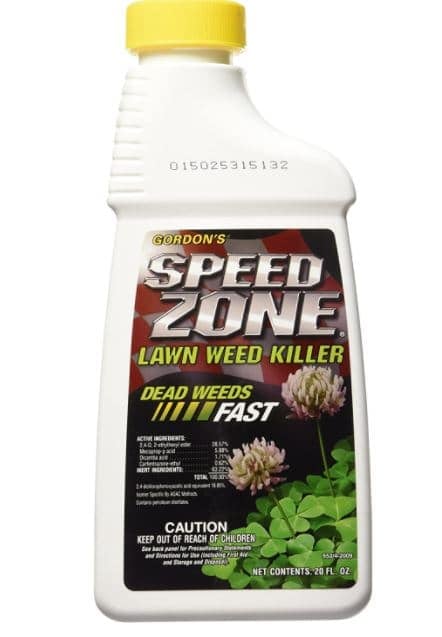
|
Speed Zone Herbicide
|
||
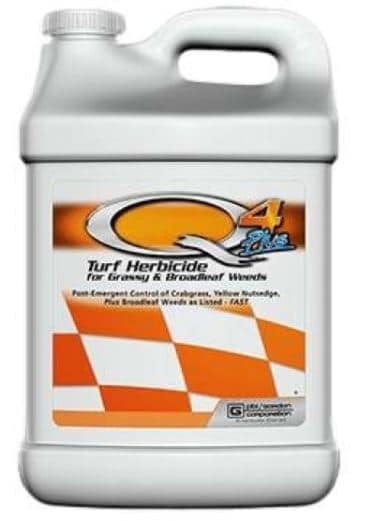
|
Gordon’s Q4 Plus Herbicide
|
||
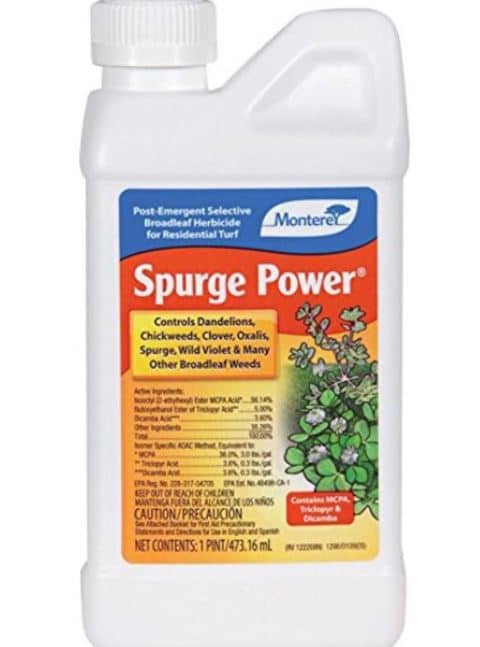
|
Monterey LG 5600 Spurge Power Herbicide
|
1. Speedzone Weed Killer
Speedzone contains 1.71% dicamba and other important broadleaf killers such as 2,4-D and Mecoprop-p acid, making it a highly effective weed killer for creeping charlie. It works fast, especially if you apply on actively growing weeds in your lawns and yard.

List of weeds controlled: Devils ivy (creeping charlie), dandelion, oxalis, henbit, purslane, plantain, henbit, poison ivy, poison oak, nettle, pigweed, bindweed, clovers, and many others.
2. PBI Gordon Q4 Plus Herbicide

- Post-emergent ground ivy killer
- Also kills grassy weeds
- Safe for most turfgrasses
- Kills ground ivy and many other broadleaf weeds
3. Monterey LG 5600 Spurge Power Herbicide

- Contains Dicamba guaranteed to kill creeping charlie
- Works as a post-emergent herbicide
Contains Mcpa; Triclopyr; Dicamba
4. Southern Ag Weed Killer
The 2; 4-D Amine Weed Killer has the active ingredient of;
- Dimethylamine salt of 2,4-D-Dichlorophe noxyacetic acid=46.3%
- Other ingredients=53.7%
- Total=100%
This weed killer is used explicitly in controlling many broadleaf weeds and woody plants. You will have to be patient to see the desired results, but generally, it works excellently against creeping charlie and other broadleaf weeds. To notice its effect, creeping charlie will start to brown.
It’s an inexpensive weed killer that requires just 1 to 4 pints per acre. It also lasts on the ground for a very long time. Therefore for great results, use two ounces of 2; 4-D Amine Weed Killer concentrate to 1 gallon of water, and you can also add one drop of dish soap as a surfactant. As always advised, follow the manufacturer’s instructions.
5. Trimec Classic Broadleaf Herbicide
Active ingredients:
- Dimethylamine salt of 2,4-dichlorophenoxyacetic acid=25.93%
- Dimethylamine salt of (+)-(R)-(2-methyl-4-chlorophenoxy) propionic acid=6.93%
- Dimethylamine salt of Dicamba 3,6-dichloro-o-anisic acid=2.76%
- Other ingredients=64.38%
- Total=100%
Creeping charlie as a broadleaf weed has met its angel of death in the Trimec Classic Broadleaf Herbicide. This herbicide gets tight and hard to kill weeds without several applications.
Its low odor feature makes it safe to use around people, kids, and pets. It is also economical since it doesn’t cost much and has lasting effects. Be sure to check the recommended amount of mixture to get desirable results.
6. Chickweed, Clover and Oxalis Weed Killer
Active ingredients:
- Dimethylamine salt 2-methyl-4-chlorophenoxy=13.72%
- Tricothylamine salt of 3,5,6 =1.56%
- Dimethylamine salt of dicamba=1.36%
- Other ingredients=83.36%
- Total=100%
This herbicide is designed to kill various weeds, even the broadleaf type of creeping charlie, but it doesn’t kill the grass. It also begins to work within hours of application. What’s more? It is rainproof hence can be applied throughout the year. Since it arrives as a concentrate, follow instructions on how to mix for practical application on the infested lawn size. For best results, avoid mowing your lawn for approximately two days before and after use.
7. T-Zone Turf Herbicide
Active ingredients:
- Triclopyr BEE, butoxyethyl ester=7.72%
- Sulfentrazone =0.66%
- 2, 4-D, 2- ethylhexyl ester=29.32%
- Dicamba acid=2.22%
- Other ingredients=60.08%
- Total=100%
The T-Zone Turf Herbicide is exceptional in broadleaf weed control in the cold season areas. With a combination of Dicamba and Triclopyr, no weed can escape its wrath, and results starting to show within a few hours of application.
Apart from killing devil’s ivy, T-Zone is also a good nutsege killer herbicide that you can use if you have sedges and other types of weeds growing in your yard.
This oil-based formula cuts through the cuticles of stubborn weeds like the creeping charlie. The smell isn’t unpleasant, making it ideal for residential areas. Remarkably it doesn’t kill the grass. Follow instructions for proper use.
8. 2; 4-D Amine – Weedar
Active ingredients:
- Dimethylamine Salt of 2,4-D=46.8%
- Other ingredients=53.2%
- Total=100%
This herbicide is specially formulated to provide broad-spectrum control of annual, biennial, and perennial broadleaf weeds. The active ingredients effectively kill even the creeping charlie. It easily dissolves in water when mixed correctly, making it very easy to use and effective.
Does Dicamba Herbicides Kill Creeping Charlie?
Creeping charlie is a perennial broadleaf weed that creeps and takes over the ground. It can take over a lawn and make it appear ugly with weedy patches. While you can use an organic weed killer such as borax for creeping charlie, the most effective fix is a herbicide containing dicamba.
Not all or just any herbicide is suitable for this task. The only weed killers that are effective at eradicating creeping charlie are those that contain dicamba as one of the active ingredients. Even Dicamba is only successful if administered several times at the appropriate time.
To kill creeping charlie, you must use a Dicamba-based herbicide to your lawn in early fall when the weed is growing most aggressively. This way, it will be left weakened enough to have a hard time enduring the winter. You can also apply dicamba-based herbicide in the late spring to early summer. This timing will only inhibit rather than eliminate creeping charlie in your lawn.
Pro tip: Only apply dicamba herbicide three days after mowing and not mow for three days after administering it. Creeping charlie will grow more leaves, causing it to take in more herbicide hence allowing time for the herbicide to combat the plant’s system. You can also use 2, 4-D, Dicamba, or triclopyr individually or combine all these products for a more effective job.
Will Dicamba kill creeping charlie but not grass?
There two types of weed-killing herbicides, selective and non-selective herbicides. Non-selective herbicides kill everything else together with the weeds while selective kill only the specified weeds, whether grassy weeds or broadleaf weeds.
Dicamba, also known as 3, 6-dichloro-methoxy benzoic acid, is a non-selective weed killer. It is used to control broadleaf weeds and woody plants and it’s effective as both a pre and post-emergence herbicide. Dicamba is safe for most grasses and listed for use on residential lawns as well as golf courses.
This chemical will eradicate creeping charlie without harming your grass.
Dicamba and 2, 4-D are quite similar but Dicamba is more effective on tough weeds and a few of the weeds are resistant to Dicamba. In some cases, weeds may be resistant to 2, 4-D.
Nevertheless, Dicamba can be toxic to humans and animals. Be careful when handling it.
An unhealthy and unkempt lawn will attract the weird creeping charlie. Even though it has attractiveness you can’t resist, its negative effects make it not worth having around your lawn. Besides using herbicides, also practice regular mowing, watering, and fertilizing your lawn to prevent any invasive species from attacking your yard.


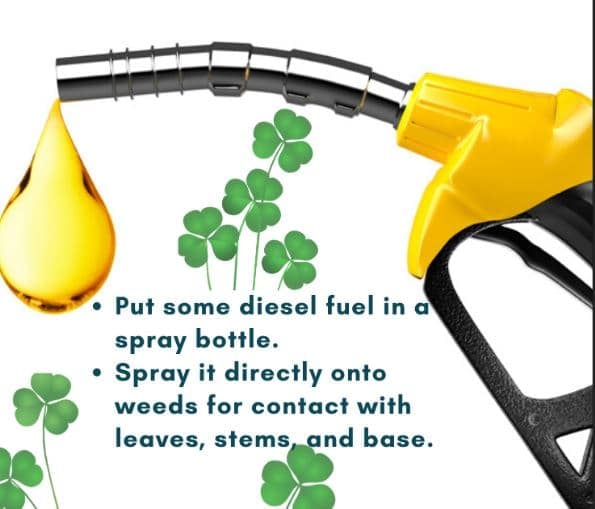
![How to Get Rid of Creeping Charlie with Borax [Picture Results]](https://gardenine.com/wp-content/uploads/2020/05/How-to-Kill-Creeping-Charlie-using-Borax.jpg)
